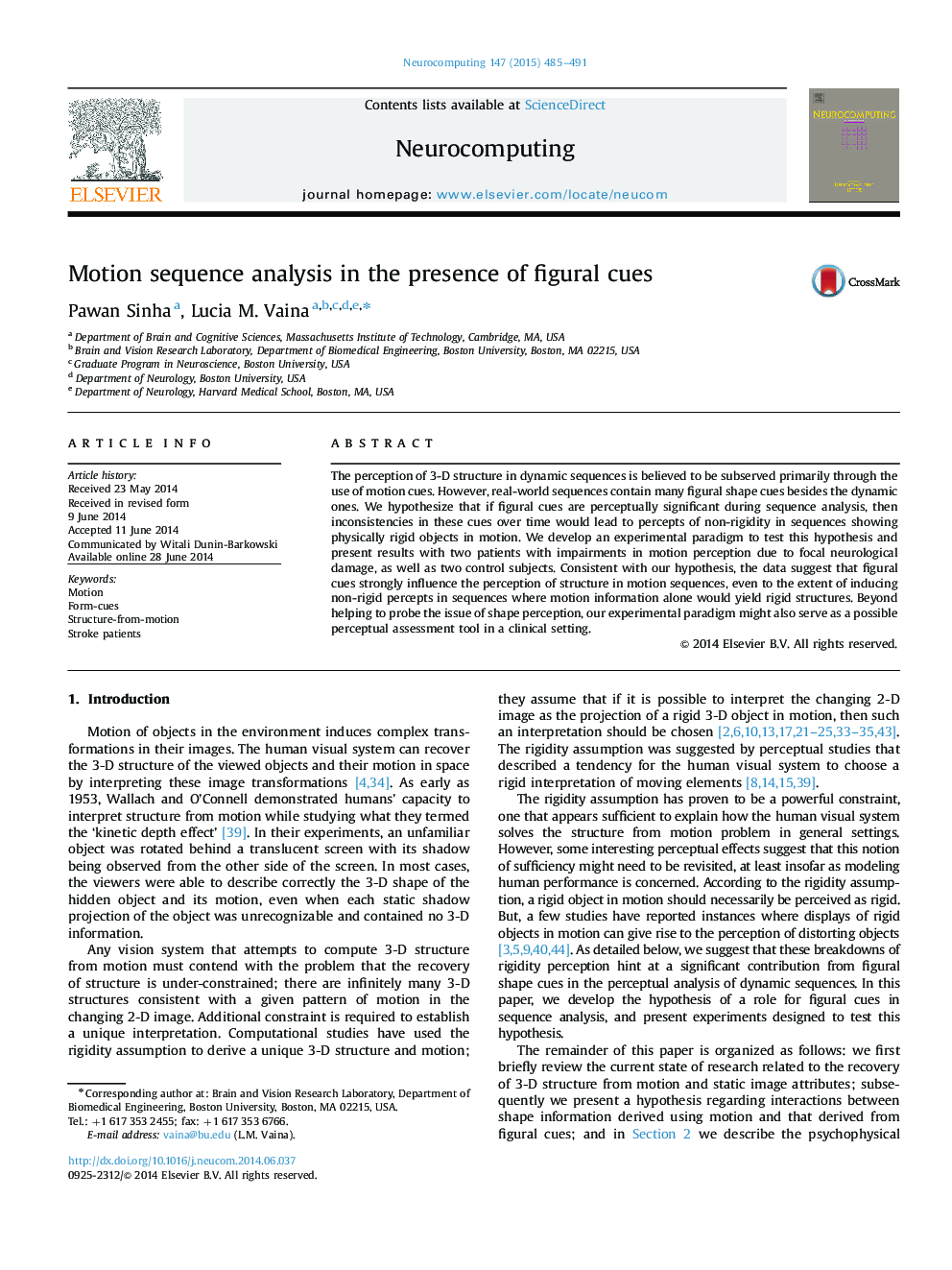| Article ID | Journal | Published Year | Pages | File Type |
|---|---|---|---|---|
| 409895 | Neurocomputing | 2015 | 7 Pages |
•Addressing how dynamic and figural cues interact in visual sequences.•Novel paradigm to dissociate contributions of figural and dynamic cues.•Assessment of healthy subjects and those with brain lesions.•Empirical results point towards a computational model of visual sequence analysis.
The perception of 3-D structure in dynamic sequences is believed to be subserved primarily through the use of motion cues. However, real-world sequences contain many figural shape cues besides the dynamic ones. We hypothesize that if figural cues are perceptually significant during sequence analysis, then inconsistencies in these cues over time would lead to percepts of non-rigidity in sequences showing physically rigid objects in motion. We develop an experimental paradigm to test this hypothesis and present results with two patients with impairments in motion perception due to focal neurological damage, as well as two control subjects. Consistent with our hypothesis, the data suggest that figural cues strongly influence the perception of structure in motion sequences, even to the extent of inducing non-rigid percepts in sequences where motion information alone would yield rigid structures. Beyond helping to probe the issue of shape perception, our experimental paradigm might also serve as a possible perceptual assessment tool in a clinical setting.
